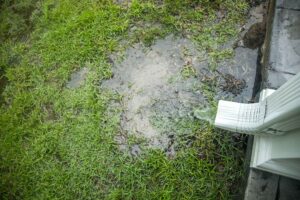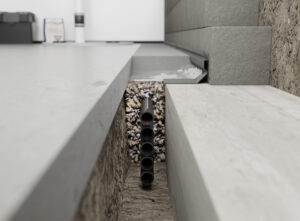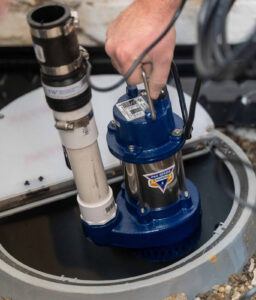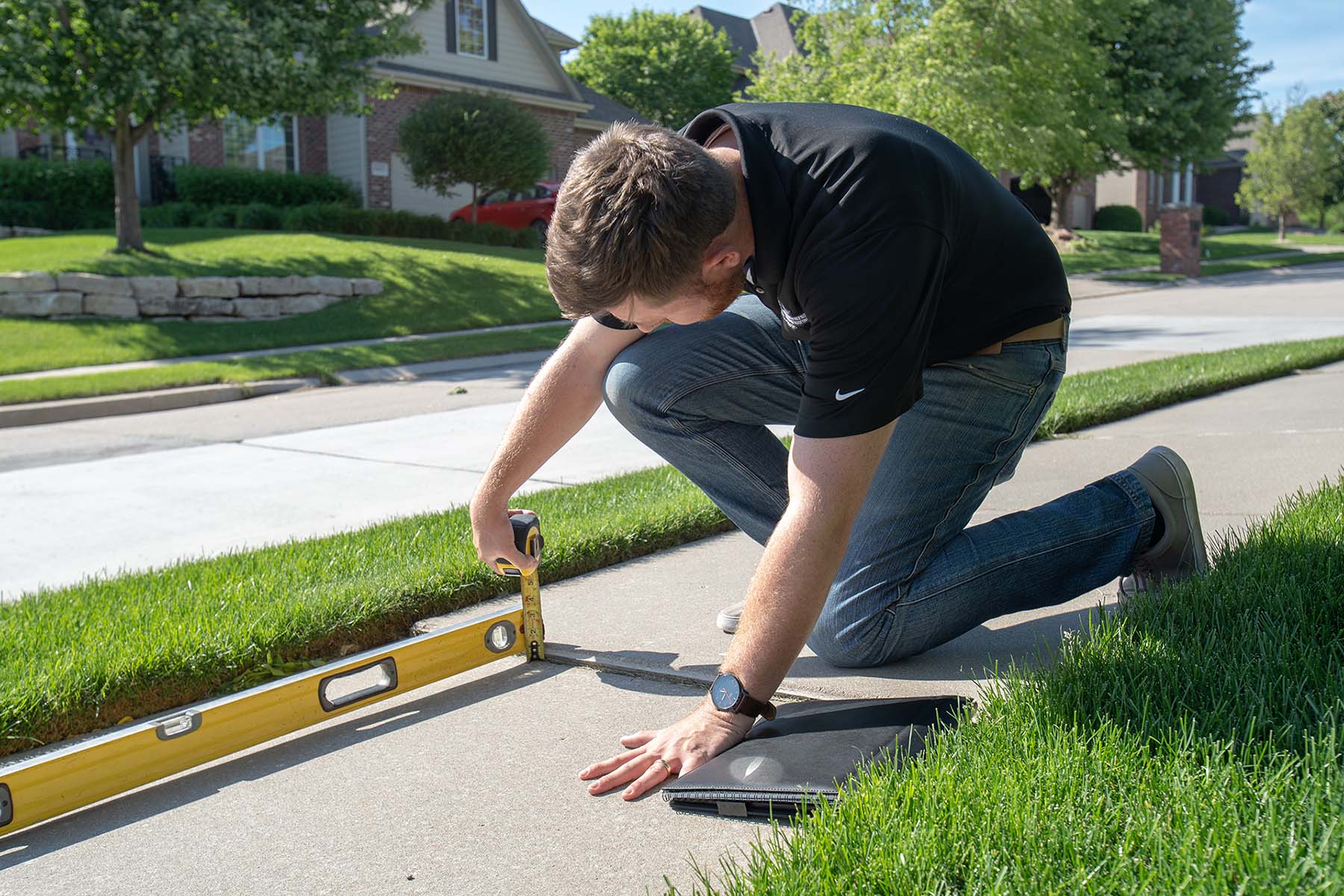
If you're finding water coming through the basement floor, you’re not alone—and you’re right to be concerned. Water seepage in your basement can lead to mold growth, property damage, and even foundation issues if not addressed quickly.
This guide will walk you through why water might be coming up through your floor, what steps to take right away, and which long-term waterproofing solutions will keep your basement dry for good.
Seeing water seeping through your basement floor is more than just a nuisance—it’s a warning sign. The most common cause? Hydrostatic pressure.

The soil surrounding your home naturally contains moisture. After heavy rain or snowmelt, this water builds up in the ground, increasing pressure against your basement floor and walls. Over time, the force can push water through cracks in the concrete—or even through the pores of the concrete itself.
When the water table rises after storms or seasonal changes, excess groundwater presses against your foundation from below. If your basement floor wasn’t built to handle this pressure, water will find its way in.
Improper grading, clogged gutters, or downspouts that discharge too close to the house can allow water to pool around your foundation—eventually seeping into your basement.

In some cases, water on the floor may not be coming from outside at all. Leaky pipes embedded in your basement floor can go unnoticed until puddles start appearing.
Start by cleaning up the water so you can identify where it’s coming from. Towels, mops, and even a wet/dry vacuum can help with initial cleanup.
If you suspect the water is from a plumbing issue, shut off your home’s main water supply. If you’re unsure where the valve is or how to use it, call a licensed plumber.
Moisture that lingers in a basement can quickly lead to mold and musty odors. Open windows and use fans or a dehumidifier to improve airflow and speed up drying.
If you’ve had water come through the floor once, it’s likely to happen again. Here are proven solutions to keep your basement dry for the long haul:
Interior drain tile systems are installed along the inside perimeter of the basement to collect and redirect groundwater before it reaches the floor. They’re a reliable, long-term solution for relieving hydrostatic pressure and keeping your basement dry.

A sump pump is one of the most effective ways to manage rising groundwater. Installed in a pit below your basement floor, it activates when water levels get too high—pumping it safely away from your home.

Water often finds its way in through small cracks or joints in the concrete slab. Sealing these with epoxy or polyurethane injections can stop leaks at the source.
Redirecting water away from your foundation is critical. Here’s how:
Consider soil amendments, raised beds, or dry creek beds to help move water away naturally. These landscaping features not only enhance curb appeal but also support a drier, healthier foundation.
Water coming through your basement floor is a serious issue—but it’s one you don’t have to face alone. With over 40 years of experience, Anchored Walls delivers proven basement waterproofing solutions tailored to your home. From sump pump installation and drainage improvements to foundation crack repair, our expert team is here to keep your basement dry and your foundation protected for the long haul.
Schedule your free inspection today and see why homeowners have trusted Anchored Walls for generations.



By submitting this form and signing up for texts, you consent to receive text messages from Anchored Walls at the number provided, including messages sent by auto dialer. These may include messages related to estimates, project updates, appointment scheduling, and promotional offers. Consent is not a condition of purchase. Msg & data rates may apply. Msg frequency varies. Unsubscribe at any time by replying STOP or clicking the unsubscribe link (where available) and no further messages will be sent. Reply HELP for help. Information will not be shared with third parties for marketing or promotional purposes. Privacy Policy